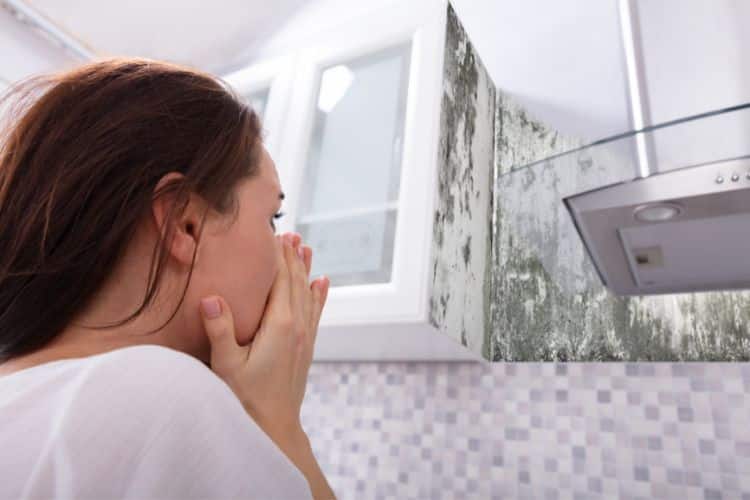Mold growth can be a persistent problem in homes, leading to potential health risks and damage to your property. Taking proactive measures to prevent mold growth is essential for maintaining a safe and healthy living environment. In this blog post, we will provide you with practical tips and advice on how to prevent mold growth in your home, ensuring peace of mind and mold-free living space.

Control Moisture and Humidity Levels
Mold thrives in damp and humid environments, making moisture control a crucial aspect of mold prevention. Follow these guidelines to keep moisture levels in check:
- Repair leaks promptly: Any water leaks, whether from pipes, roofs, or windows, should be fixed immediately to prevent moisture buildup.
- Proper ventilation: Ensure that your home has adequate ventilation in areas prone to moisture, such as bathrooms, kitchens, and laundry rooms. Use exhaust fans or open windows when cooking, showering, or doing laundry to reduce humidity levels.
- Monitor indoor humidity: Use a hygrometer to measure the humidity levels in your home. Maintain indoor humidity below 60%, ideally between 30% and 50%, to discourage mold growth.
Ensure Proper Air Circulation
Good air circulation helps prevent stagnant air and excessive moisture, reducing the likelihood of mold growth. Consider the following tips for promoting airflow:
- Open windows and doors: Regularly open windows and doors to allow fresh air to circulate throughout your home. This helps in reducing moisture and preventing condensation.
- Use fans: Install ceiling fans or use portable fans to improve air circulation in enclosed spaces. Fans can help dry out damp areas and reduce humidity levels.
- Maintain clear pathways: Avoid blocking air vents, air returns, and registers with furniture or other items. Clear pathways allow for unrestricted airflow and help prevent moisture buildup.
Address Condensation Issues
Condensation can create moisture-rich environments that encourage mold growth. Take the following steps to combat condensation:
- Insulate cold surfaces: Insulate cold surfaces, such as windows, walls, and pipes, to prevent condensation from forming. Proper insulation helps maintain surface temperatures above the dew point, minimizing moisture accumulation.
- Use dehumidifiers: In areas prone to high humidity, such as basements or crawl spaces, consider using dehumidifiers to remove excess moisture from the air.
- Employ moisture-absorbing materials: Place moisture-absorbing materials, such as silica gel packs or desiccants, in closets, cabinets, or other areas susceptible to condensation.
Regularly Clean and Maintain
Regular cleaning and maintenance practices can help prevent mold growth by eliminating potential food sources and reducing moisture. Consider the following tips:
- Clean and dry spills promptly: Clean up any spills or water accidents immediately, and ensure that affected surfaces are thoroughly dried.
- Clean and maintain gutters: Regularly clean and inspect gutters and downspouts to ensure proper drainage. Clogged gutters can lead to water accumulation, increasing the risk of moisture-related issues.
- Monitor indoor plants: Overwatering indoor plants can contribute to excess moisture. Be mindful of proper watering practices and ensure good drainage to prevent mold growth in potted plants.
- Clean and ventilate bathrooms: Regularly clean bathroom surfaces, including tiles, grout, and shower curtains, to prevent mold buildup. Proper ventilation after showering or bathing helps remove excess moisture.
Regular Inspections
Regular inspections are essential for early detection and prevention of mold growth. Consider the following:
- Check for signs of leaks: Inspect areas prone to leaks, such as under sinks, around toilets, and near appliances. Look for signs of water damage, discoloration, or musty odors.
- Monitor hidden areas: Pay attention to hidden spaces, such as attics, basements, and crawl spaces, where mold growth can go unnoticed. Use adequate lighting and proper ventilation to ensure these areas remain dry and well-maintained.
Conclusion
Preventing mold growth in your home requires a proactive approach and consistent maintenance. By controlling moisture levels, promoting air circulation, addressing condensation, maintaining cleanliness, and conducting regular inspections, you can significantly reduce the risk of mold infestation. Remember, early prevention is key to avoiding the potential health hazards and property damage associated with mold. Implement these tips and advice to create a mold-free environment and ensure a healthy living space for you and your family.




